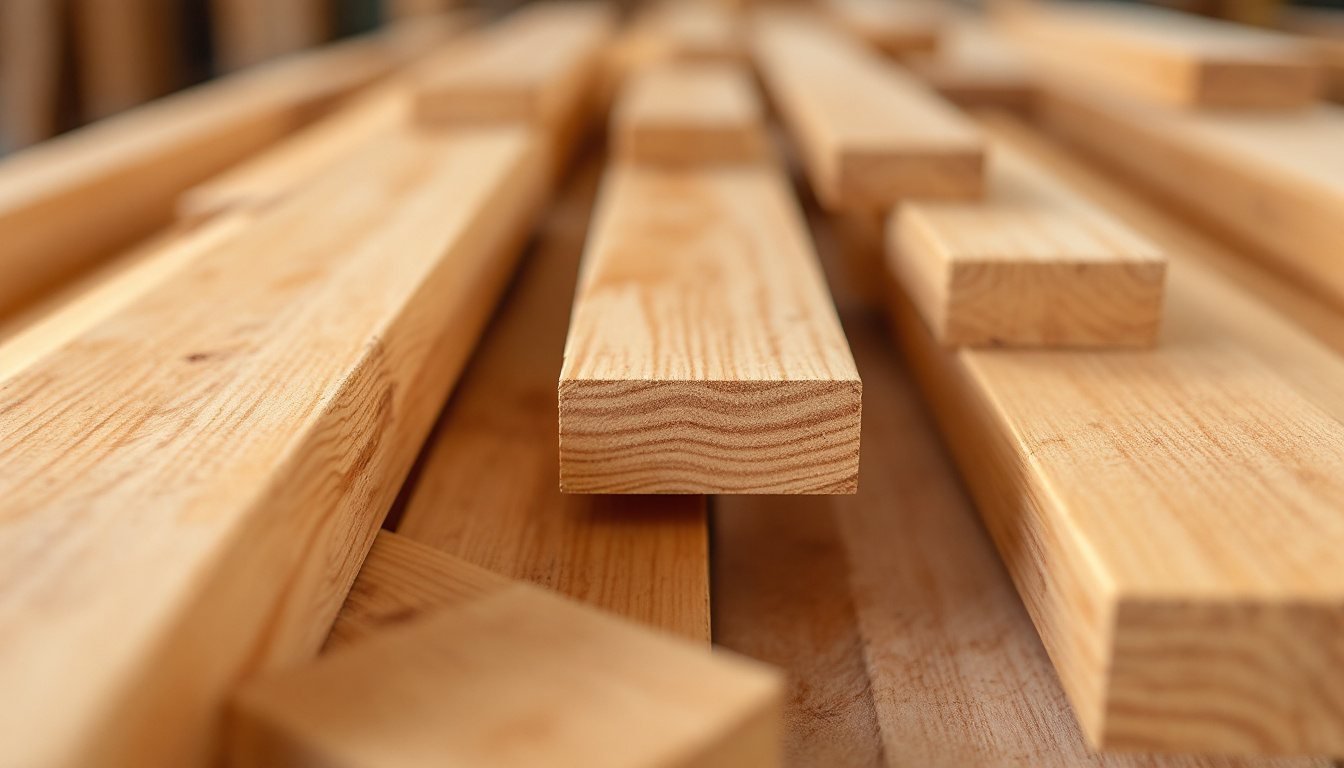In the construction industry, the choice of materials plays a crucial role in ensuring the integrity and safety of a build. One such material that has gained prominence in recent years is Laminated Veneer Lumber (LVL), especially in formwork applications. This guide aims to provide a comprehensive understanding of LVL formwork sizes available in Australia, assisting builders and contractors in making informed decisions for their projects.
Understanding LVL formwork: An overview
LVL formwork is engineered wood that is manufactured from thin layers of wood veneer, bonded together with adhesives under heat and pressure. This method of construction gives LVL its remarkable strength and stability, making it an ideal choice for formwork in the concrete form work industry, particularly for high load-bearing applications in concrete structures.

Unlike traditional timber, LVL’s homogeneous nature ensures that it is less prone to warping, splintering, and shrinkage, emphasising its reliability in supporting heavy loads during the curing of concrete. The use of LVL formwork can significantly enhance construction efficiency while maintaining optimal safety standards.
What is LVL Formwork?
LVL (Laminated Veneer Lumber) formwork is a type of engineered wood product widely used in the concrete formwork industry. It is manufactured by bonding thin wood veneers together with resin under heat and pressure, creating a strong and durable material capable of withstanding the pressure of wet concrete. This makes LVL formwork an ideal choice for structural applications such as joists, bearers, walers, soldiers, and edge boards in concrete formwork framing projects.
The manufacturing process involves layering multiple thin wood veneers, which are bonded together using a specialized adhesive. This method results in a material that is significantly stronger and more durable than traditional formwork timber. One of the standout features of LVL formwork is its resistance to warping and splitting, making it particularly suitable for use in corrosive environments where traditional timber might fail.
A key benefit of LVL formwork is its colour-coded end section, which simplifies identification and differentiation from other types of formwork. The bright orange colour not only aids in easy recognition but also provides moisture protection, helping to prevent damage from exposure to the elements. This feature ensures that the formwork remains in good condition, even in challenging environmental conditions.
LVL formwork is available in a range of sizes and thicknesses, making it versatile enough to meet the demands of various construction applications. It is manufactured to meet the stringent requirements of the concrete formwork industry, ensuring it can handle high-load bearing and corrosive environments effectively.
Overall, LVL formwork stands out as a strong, durable, and versatile material, well-suited for use in the concrete formwork industry. Its unique combination of strength, durability, and moisture protection makes it an ideal choice for a wide range of construction applications.
The importance of laminated veneer lumber formwork in construction
LVL formwork plays a pivotal role in modern construction, accommodating various architectural designs while providing a robust support system. Its lightweight characteristics simplify handling and installation, making it easier for construction teams to work at different heights. The truFORM structural laminated veneer lumber is painted bright orange, enhancing its visibility and usability on construction sites.
Moreover, LVL’s ability to be pre-cut and manufactured to specific sizes reduces waste and enhances efficiency on site, ultimately contributing to faster project completion times. Its predictable performance under load also allows for more accurate structural design, providing peace of mind for engineers and architects alike.
Different types of LVL formwork
There are several types of structural laminated veneer lumber (LVL) formwork options available, each suitable for specific applications. These include:
- Standard LVL panels: Used primarily for slab formwork, offering multiple height and thickness options.
- Beam formwork: Designed for supporting larger spans, ideal for bridges or multi-storey structures.
- Custom-designed LVL formwork: Tailored specifically for unique architectural needs or challenging construction scenarios.
Understanding the variety available helps builders select the most appropriate solution for their particular needs, optimising both safety and efficiency.
Key factors to consider when choosing LVL formwork sizes
When deciding on LVL formwork sizes, several critical factors should be taken into account. These considerations ensure that the chosen formwork will meet both structural requirements and regulatory standards.
The role of load-bearing capacity
Load-bearing capacity is one of the foremost considerations when selecting LVL formwork. Assessing the anticipated loads that the formwork will need to support—such as wet concrete, workers, and equipment—is essential to ensuring structural integrity during the construction process.
Calculating load requirements allows builders to select LVL sizes that can comfortably manage expected weights, thus avoiding potential safety hazards and ensuring compliance with engineering specifications.
The significance of formwork height and length
The height and length of the required LVL formwork also play significant roles in the overall design and functionality of the formwork system. Height considerations impact the overall volume of concrete that will be supported, while length relates to the spans required for specific elements like walls and slabs.
It is crucial to measure and account for these dimensions accurately. Failing to do so may result in inadequate support, leading to structural risks and project delays. Furthermore, understanding the site-specific constraints—for example, available space for installation—can guide decisions around appropriate sizes.
Common LVL formwork sizes in Australia
Australia’s construction landscape features a range of standard LVL formwork sizes suitable for diverse projects. Familiarising oneself with these sizes can streamline the planning and acquisition process for contractors.
Standard sizes for residential construction
For residential applications, LVL formwork sizes typically range from 240mm to 600mm in width and can be tailored in height from 45mm to 90mm. These dimensions accommodate various home designs, ensuring structural efficiency while remaining compliant with local building standards.
In residential settings, standard LVL sizes are frequently used in areas such as flooring and roofing, enhancing overall stability and durability.
Typical sizes for commercial projects
Commercial projects often demand larger and more robust LVL formwork sizes due to the increased loads and spans required in their design. Common sizes range from 600mm in width, extending to 1200mm, with height options going up to 150mm.
These sizes not only support heavy-duty applications but also provide flexibility to accommodate different types of commercial builds, including high-rise buildings and large warehouse structures.
How to calculate the right concrete formwork size for your build
Choosing the right LVL formwork size requires a systematic approach to ensure that all factors are considered before finalising selections. Below is a brief overview of the calculation process.
Understanding the calculation process
The first step in the calculation process is to determine the load requirements based on the project specifics. This includes evaluating the weight of fresh concrete and any other additional loads that will be applied during construction.
Subsequently, structural engineering principles must be applied to ensure that the chosen LVL size can safely support these loads. Engaging with a qualified structural engineer can help facilitate this process and ensure compliance with codes and regulations.
Tools and resources for accurate measurement
To enhance accuracy during the sizing process, various tools and resources can be utilised, including engineering software specifically designed for load calculations. Measurement tools such as laser distance measurers can assist in obtaining precise dimensions on site.
In addition, consultation with LVL manufacturers or suppliers can provide insights into recommended sizes based on the specific needs of a project, aiding builders in making informed decisions.
The impact of Australian building regulations on LVL formwork sizes
Australian building regulations play a vital role in dictating the acceptable sizes and specifications for LVL formwork. Understanding these regulations is essential to ensure that construction practices meet safety standards and achieve structural integrity.
Overview of relevant Australian building codes
Several building codes govern the use of LVL in construction, including the National Construction Code (NCC) and standards set by Standards Australia. These codes outline the requirements for structural performance, durability, and safety, and must be strictly adhered to during construction.
Builders and contractors should ensure they are familiar with these regulations before commencing any projects, as failure to comply could lead to legal implications and unsafe structures.
Ensuring compliance with regulations and moisture protection
To maintain compliance with Australian building regulations, it is advisable to consult with building certifiers or industry experts throughout the construction process. Regular inspections and assessments can help verify that the chosen LVL formwork timber and construction practices align with the required standards.
Ultimately, ensuring compliance not only protects the safety of all stakeholders involved in the build but also contributes to the long-term viability and success of the construction project.


